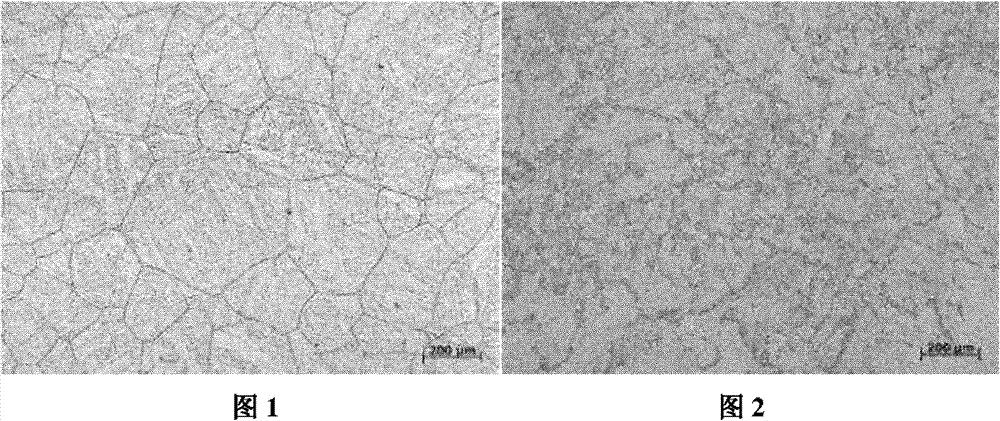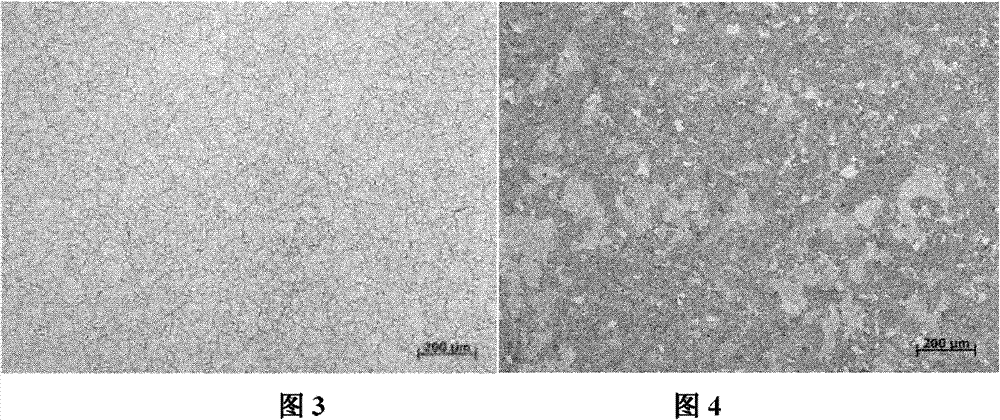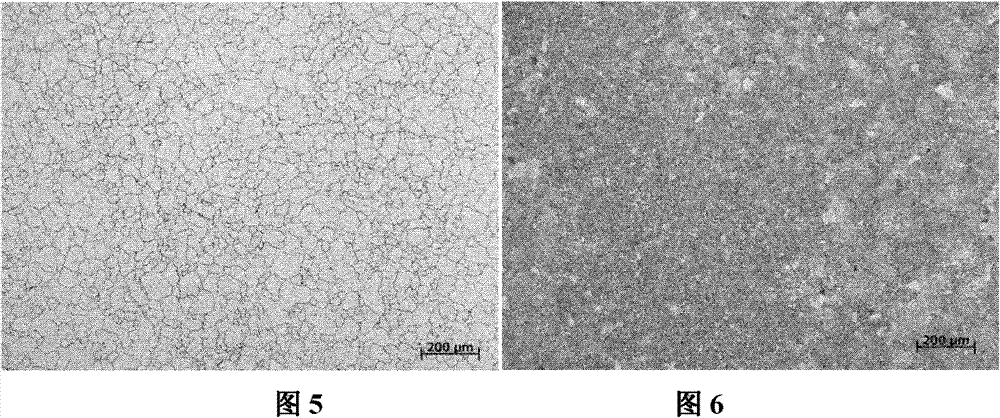Method for refining grains of large medium high alloy steel forgings
A technology for large-scale forgings and grain refinement, applied in heat treatment equipment, heat treatment process control, manufacturing tools, etc., can solve the problems of coarse grains and mixed grains, unstable grain refining effect of large-scale forgings, etc., and achieve a simple operation process. Easy to operate, reduce energy and time cost consumption, refine the effect with remarkable effect
- Summary
- Abstract
- Description
- Claims
- Application Information
AI Technical Summary
Problems solved by technology
Method used
Image
Examples
Embodiment 1
[0032] The test uses 30Cr2Ni4MoV steel commonly used for large forgings of low pressure rotors, and its original grain size is about ASTM No.1.0 grade, see figure 1 The chemical composition is shown in Table 1, and the test material was processed into a 15mm×15mm×15mm sample. First, the sample was heated from room temperature to 840 °C at a heating rate of 30 °C / h, and kept for 3 h; then, the sample was cooled to a pearlite transition nose tip temperature of 600 °C at a rate of 50 °C / h, and kept for 120 h to generate a certain amount of Reticular distribution of pearlite tissue (such as figure 2 ) to eliminate the inheritance of the structure, and then cooled to room temperature; then, the sample was heated to 870 °C at a heating rate of 30 °C / h, and kept for 3 h to make the austenitization uniform, and recrystallized fine particles through austenitization. crystallized grains, then cooled to room temperature, grain size see image 3 shown. The test results show that the m...
Embodiment 2
[0036] The test uses 30Cr2Ni4MoV steel commonly used for large forgings of low pressure rotors, and its original grain size is about ASTM No.1.0 grade, see figure 1 The chemical composition is shown in Table 1, and the test material was processed into a 15mm×15mm×15mm sample. First, the sample was heated from room temperature to 840°C at a heating rate of 30°C / h, and kept for 3 hours; then, the sample was cooled to a pearlite transition nose tip temperature of 600°C at a rate of 50°C / h, and kept for 240 hours to generate a certain amount of Reticular distribution of pearlite tissue (such as Figure 4 ) to eliminate the inheritance of the structure, and then cooled to room temperature; then, the sample was heated to 870 °C at a heating rate of 30 °C / h, and kept for 3 h to make the austenitization uniform, and recrystallized fine particles through austenitization. crystallized grains, then cooled to room temperature, grain size see Figure 5 shown. The test results show that ...
Embodiment 3
[0038] The test uses 30Cr2Ni4MoV steel commonly used for large forgings of low pressure rotors, and its original grain size is about ASTM No.1.0 grade, see figure 1 The chemical composition is shown in Table 1, and the test material was processed into a 15mm×15mm×15mm sample. First, the sample was heated from room temperature to 840 °C at a heating rate of 30 °C / h, and kept for 3 h; then, the sample was cooled to a pearlite transition nose tip temperature of 600 °C at a rate of 50 °C / h, and kept for 360 h to generate a certain amount of Reticular distribution of pearlite tissue (such as Image 6 ) to eliminate the inheritance of the structure, and then cooled to room temperature; then, the sample was heated to 870 °C at a heating rate of 30 °C / h, and kept for 3 h to make the austenitization uniform, and recrystallized fine particles through austenitization. crystallized grains, then cooled to room temperature, grain size see Figure 7 shown. The test results show that the m...
PUM
 Login to View More
Login to View More Abstract
Description
Claims
Application Information
 Login to View More
Login to View More - R&D
- Intellectual Property
- Life Sciences
- Materials
- Tech Scout
- Unparalleled Data Quality
- Higher Quality Content
- 60% Fewer Hallucinations
Browse by: Latest US Patents, China's latest patents, Technical Efficacy Thesaurus, Application Domain, Technology Topic, Popular Technical Reports.
© 2025 PatSnap. All rights reserved.Legal|Privacy policy|Modern Slavery Act Transparency Statement|Sitemap|About US| Contact US: help@patsnap.com



